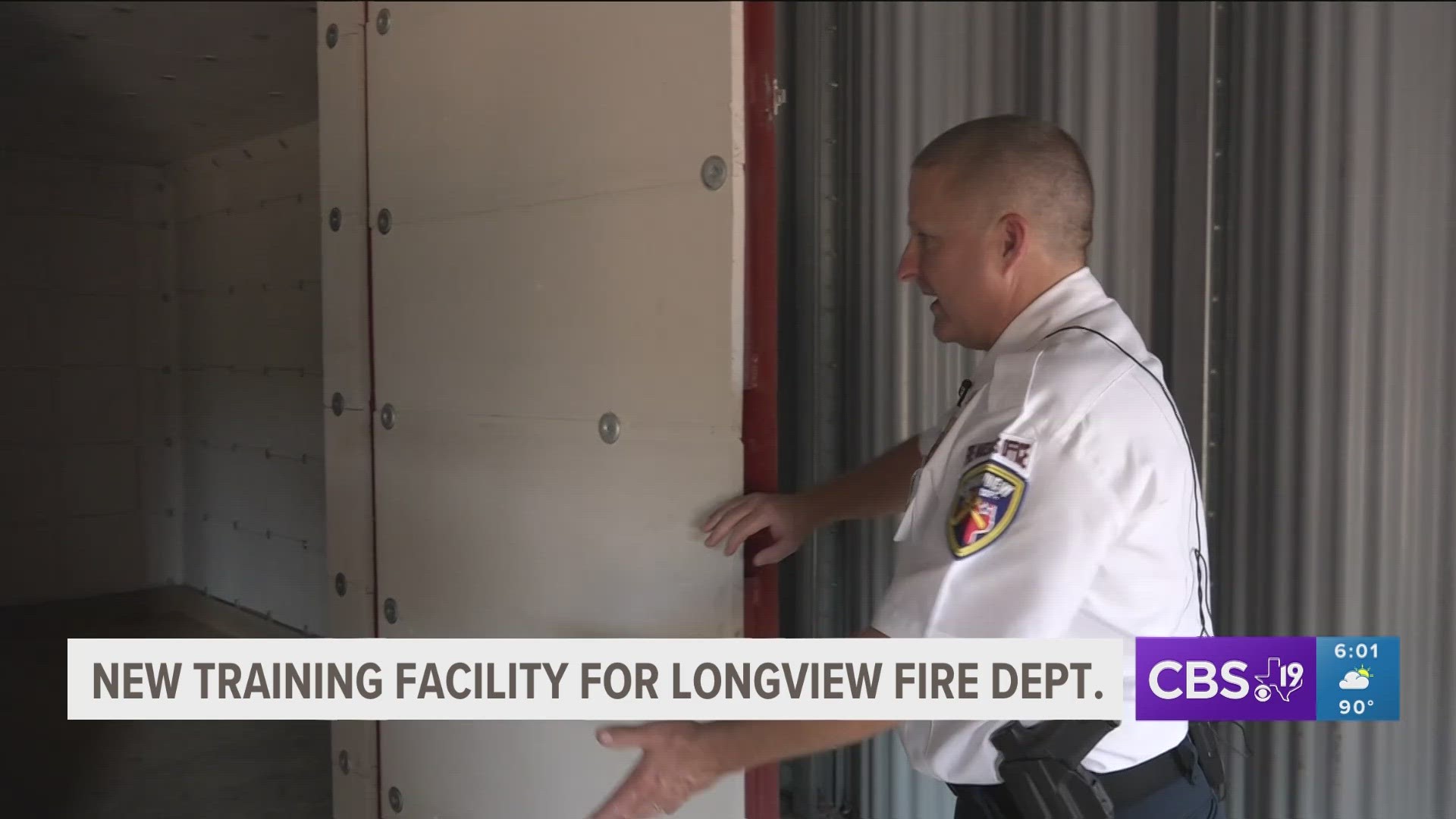LONGVIEW, Texas — The Longview Fire Department unveiled a new training facility for their firefighters with a goal of being ready when responding to real-world emergencies.
CBS19 explored the burn building and training tower. Longview Fire Department spokesperson Kevin May shared how it will help firefighters save lives.
"This could be simulating going from a living area and into a bedroom area or a dining room area," May said.
Going into a burning home full of smoke, it’s just one of the scenarios Longview firefighters will be trained in their new Burn Building and Training Tower.
“Everything is set up to where we can train as realistic as possible," May said. "That includes realistic training with real fires."
"We can use propane (and) we can use hay," May said.
It's all to simulate what firefighters will see as they go through thick, blinding smoke. May showed us some of the features this building has for firefighters as they train, including saving someone from a second floor.
"We would simulate this fire on a balcony and then a crew would throw a ladder up against and we would evacuate that resident," May said. "You have hallways we can navigate."
The training tower is about 50 feet tall so firefighters can train with high-rise scenarios.
"We’ve got anchor points here so the guys can do rappelling operations," May said.
At many levels, the LFD will be using this facility for any real-world situation you can think of, including a train derailment.
"About a month ago we held a tank car school here," May said.
This facility is one of three facilities in the entire country that will offer training for hazmat rail emergencies.
"We are continuously training on every aspect of our job. If you don’t train, you lose those skill sets," May said.
He adds that this facility will continue to grow as the departments itself grows.
"We hope to eventually put a driving training course down here so there’s going to be a lot of activity down here once everything is completed," May said.
The new burn building and training tower were paid for by a bond that voters approved back in 2018.

